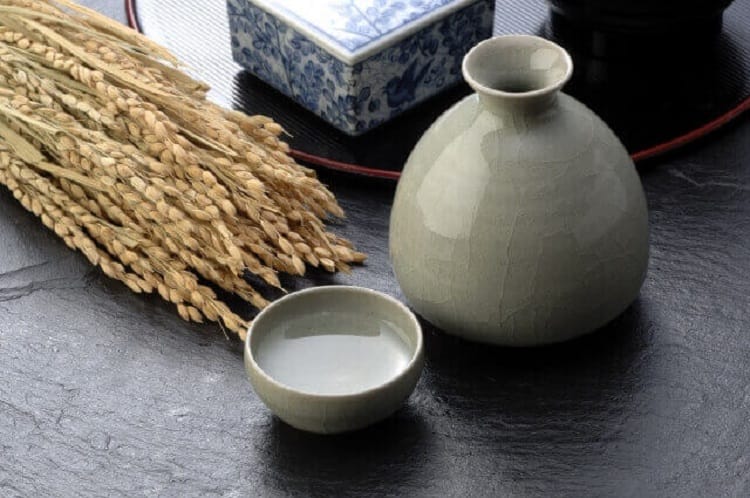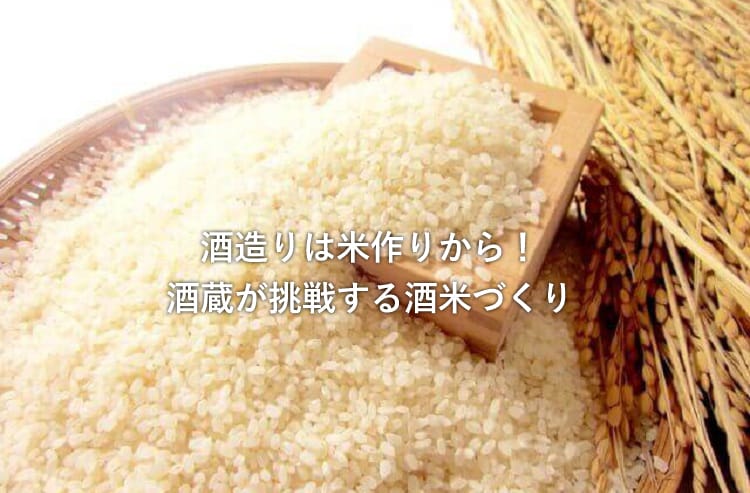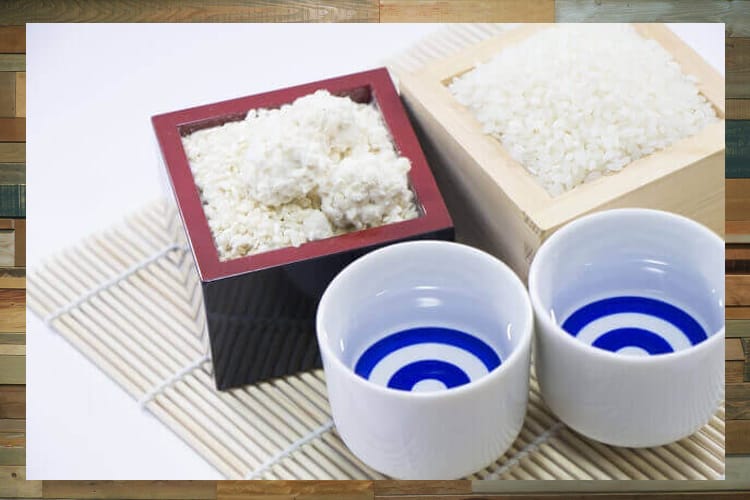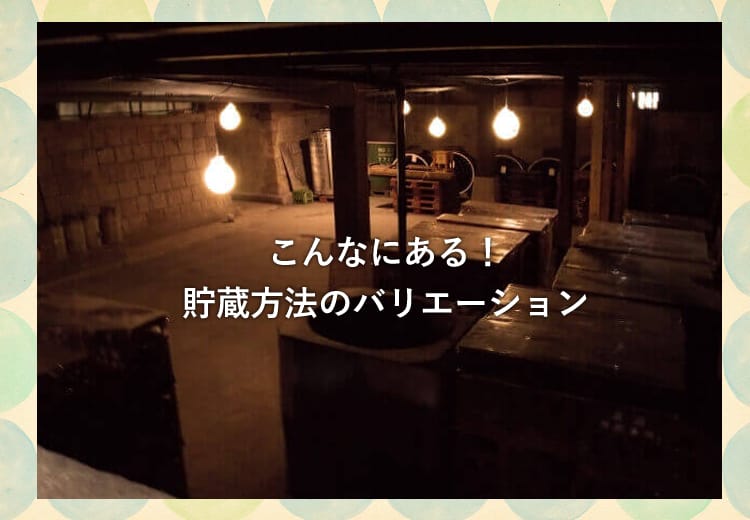
Sake brewing starts with rice! Making sake rice that breweries challenge

In many breweries,Sake rice used for sake brewing is usually purchased from local JAs or agricultural associations.is. However, in recent years, without going through unions,An increasing number of sake breweries are purchasing sake rice from farmers who have signed direct contracts.. Direct contracts have great advantages for both sake breweries and farmers. As a sake brewery, it is possible for farmers to make varieties by specifying the varieties they want to use and their desired cultivation method.
It also makes it easier for farmers to make a cultivation plan because they always buy the harvest. Sharing what kind of liquor rice is produced, what kind of liquor is produced, what kind of liquor is finished, and what kind of reaction is received from consumers by the sake brewery and farmers strengthens the cooperation between the two. It can be said that it contributes to the improvement of motivation for making sake.
In addition, in recent years, there has been another step forward.Sake breweries themselves have started to actively work on rice production.. Here are some representative sake breweries.
First, located in the northernmost part of OsakaAkika Sake Brewery (Nose-cho, Toyono-gun, Osaka)). Leveraging the experience of both rice and sake brewing, which has continued for nearly 120 years since its foundation, President Hiroaki Oku himself is still making rice and is the “agricultural brewer integrated” brewery that is the total command of sake brewing as Mr. Tsuji. . From 1995, we will challenge Yamada Nishiki's pesticide-free cultivation to make safer and higher quality sake rice.
And in 2012 yearPractice of “Circulation-free organic farming”Did. this is,Efforts to use only rice cake, rice bran, and sake lees for all fertilizers in the company's 11 hectaresis. Of course, all sake made by Akika Sake Brewery, which is particular about rice, is pure rice sake. The attitude toward good rice production is also reflected in the quality of sake.
Next,Izumihashi Sake Brewery (Ebina City, Kanagawa Prefecture)). Based on the belief that sake brewing begins with rice production, it is rare throughout the country to consistently take responsibility from sake rice brewing to rice milling and brewing.`` Cultivation brewery * ''Known as
Izumihashi Sake Brewery organized a research and cultivation association called Sagami Sake Rice Study Group in cooperation with local sake rice producers, JA, and the Agricultural Technology Center in Kanagawa Prefecture. We are working on the cultivation of sake rice in Ebina City, Zama City and Sagamihara City. The cultivation area has expanded to about 2017 hectares in 44 years.More than 90% of sake rice used at Izumihashi Sake Brewery is locally grown, and Izumihashi Sake Brewery itself cultivates its own rice in about 7 hectares of rice fields..
Speaking of the symbol of Izumihashi Sake Brewery,Red dragonfly. Even in the brewery, people who visit the red dragonfly art will welcome you. Red dragonfly grows with rice in rice field where rice grows. In order to grow healthy and leave offspring, safe rice fields are essential.At Izumihashi Sake Brewery,Along with the idea of creating a hometown where many red dragonflies fly in the autumn sky and wanting to continue making sake that can be enjoyed with confidence, we are actively working on reducing pesticide-free and pesticide-free cultivation..
President Yuichi Hashiba says: “The rice field is a deposit from our descendants. Since it is a rice field that has been in the future, we want to protect it in the best possible condition.” With this sincere attitude and passion, safe and delicious sake is made.
* Cultured brewery is a registered trademark of Izumihashi Sake Brewery.
Increasing number of sake breweries working on organic products

In recent years, there has been a growing need for organic products. In response to this trend, the number of sake breweries that are actively promoting the use of organically grown rice that does not use any agricultural chemicals or chemical fertilizers has been increasing year by year. AndSake breweries that have obtained organic certification in Japan and overseas have also appeared..
One of them isTentaka Sake Brewery (Otawara City, Tochigi Prefecture). It is one of the few sake breweries that have obtained organic certification in Japan, the United States, and the European Union (EU).Organic certification means that a third-party certification body proves that the producer has produced it in accordance with organic standards.. It is implemented around the world as a neutral and reliable system. In Japan, in line with international standardsEstablished organic food inspection certification system (organic JAS system) based on JAS law in 1999The unified standard was decided.
I have also received Tentaka, an organic sake brewed by Tentaka Sake Brewery using organic rice. When I went to a brewery, I heard from President Munenori Owase,Sake made with organic rice is finished with a gentle taste that comes from the original sweetness and umami of rice.It seems to. Above allDaiginjo sake has a smooth texture reminiscent of velvet.To. It was a very sensual texture.
Tiantaka Sake Brewery has become more motivated by organic. In 2018 in 1, a subsidiary that produces organic raw rice, Tiantaka Organic Farm Co., Ltd., was established. Keep an eye on future moves.
In addition, Marumoto Sake Brewery with Organic Bamboo Forest (Asakuchi City, Okayama Prefecture)Don't forget. Marumoto Sake Brewery, which began growing raw rice in 1987, is a brewery that is eager to grow organically in order to further improve sake rice.
Marumoto Sake Brewery has also obtained organic certification in Japan, the United States, and the European Union (EU).. No pesticides or chemical fertilizers are used.Organic rice by cultivation methods using only the power of nature is strong in life and rich in tasteis. Of course, the new sake is wonderful, but the mildness and flavor of the taste when stored and aged for a long time is exquisite. By the way, the name “Takebayashi” comes from the fact that the underground water that flows from the nearby Mt. It's a cool name that makes you feel fresh green.
There is so much! Variations in storage methods

Sake is generally stored in a tank in the warehouse. However, some have adopted very unique storage methods. Here, we will introduce a method that is rich in individuality that is a little surprised.
・ Storm storage
What is ShinjitunnelThat. What makes this unusual storage isKikusui Brewery (Noshiro City, Akita Prefecture).
The site of the former JNR tunnel is used as a storage for sake. that name as wellUnderground Storage Laboratory. This storage, designated as a national registered tangible cultural property,A brick building full of romance of history, total length of about 100 meters, height of 4.6 meters, width of 3.7 meters.About 100 tsuboBoasting a huge area. Kikusui Shuzo purchased it from JR in 1996, which was used as the first crane form of the former Ou Main Line, which was completed in the Meiji period. The underground storage research institute conducts free tours, so if you are interested, please do so (reservation required).
Sogen Brewery (Suzu City, Ishikawa Prefecture) Is also famous for its use of tunnels. One of the three breweries started in 2013"Shodozo".Restoring the former site of the "Noto Railway Noto Line" and a part of the road that has been abandoned in 2005, but uses it as a storageIs doing.
By the way, at Sogen Shuzo,Introduced a system called “Shodozo Owner Club”doing. If you purchase 6 bottles of your favorite liquor and pay the annual maintenance fee (2018 yen as of 1,080 year), you can store and ripen it on a dedicated shelf with the owner's name. I also became an owner in commemoration of visiting the sake brewery. Although it is difficult to visit Shindozo on a daily basis, it is open to the public once a year, and employees will explain in detail.
・ Cave storage
A brewery that uses a cave that is quite rare in the country for storage,Shimazaki Brewery (Nasu Kashiyama City, Tochigi Prefecture)is. This cave, about 600 meters long forgotten after the war,Originally built to manufacture tanks at the end of World War II. Eventually, the war ended without producing tanks.
After the war, this cave has long been forgotten,Shimazaki Sake Brewery has been borrowed from the landowner since 1970. Since then, it has been used for the storage of Daiginjo's aged old sake, “Jukuro-ji”. The cave was selected as a civil engineering heritage by the Japan Society of Civil Engineers.Registered under the name “Tokyo Motor Machinery Co., Ltd. underground factory ruins”It was done.
From 4 month to 11 month, it is open to the public during weekends, holidays, Golden Week, and Bon Festival. By the way, one of the representative brands of Shimazaki Sake Brewery"Tow Rider" (Azumakishi). It was founded by a founder who loved sumo wrestlers. If you include your favorite liquor in the name of the sake, it will be fun to make sake.
・ Submarine tunnel storage
Another unusual brewery that uses only the submarine coal mines that are in operation today. The challenger isFukutsuka Sake Brewery (Kushiro City, Hokkaido)."Underwater power (from there) Junmai Ginjo"Sake calledStore and mature in a coal mine tunnel dug below the seabeddoing.
It's so popular that it sells out quickly when it is released. One of the drinks I want to drink someday.
・ Mine storage
To use the abandoned mine for storage,Sanyo Sake Brewery (Sakai City, Hyogo Prefecture).
In the mine tunnel of Akenobe Kozan, which produced copper, silver, and tin, which is one of the few in Japan,`` Meiryokura ''I made it.When the sake made in winter is carefully aged in the tunnel, the depth and mellowness that can not be said to taste will come outIt seems to.
The representative brand of Sanyo Sake Brewery“Banshu Ichijo”. “Banshu” refers to the southwestern part of Hyogo Prefecture. “One offering” means “one cup of liquor”. You often hear people say "Sassa, Ichiken" in drama historical drama. In other words, it means, “Please give me the sake of Banshu using rice and water from Banshu”. It is a name that reveals a strong love and deep confidence in the nature, rice and water of the area.
・ Kame storage
The storage method adopted by Masuda Yayoi Shoto (Kyoto City, Kyoto Prefecture), which brews Tsuki no Katsurais. Masuda Yayoi Shoten is famous as the origin of “Nigori Sake”, but in fact it is also a brewery that can be said to be the origin of “Old Sake”. With the advice of the late President Soichiro Sakaguchi, Professor Emeritus of Tokyo University, where the previous president is an authority on brewing,I started building from the 1960 eraThat's right.
Explained the everyday food of the common people, written in the Edo periodAdopted a special porcelain bowl, referring to the fact that in the book “Breakfast Breakfast”, the sake was laid down in a porcelain bowl and the taste of what it would look like after many years.I did it. It is spectacular to see that many porcelain bowls containing old sake are stacked in depth.
・ Underwater storage
Actually, there is a way to store it in water.
One of them isStorage aging in the sea. Because it is still a small number, it is a rare liquor that can hardly be met. The challenge for this underwater storage is"Underwater Aged Sake Project". This is a new attempt that began in 2013.Every fall, it is submerged in the seabed at a depth of about 15 meters off the southern Izu Nakagi, and slowly matured over about 7 months.
In the ocean, it vibrates very finely due to waves,It is said that the taste will be mellow compared to storing in the warehouse.. Tsurusuke Shiraki (Gifu City, Gifu Prefecture) and other shops that participate in this project are participating in this project.
In addition, Sink to the bottom of the damA project to challenge this unusual method has also appeared. It is an initiative to mature local sake at the bottom of the Takihata Dam (Osaka Prefecture Kawachinagano City) in Osaka Prefecture, and Kawauchi Nagano City and the local sake brewery Saijo started together in January and 2017 in 12.Sake was submerged in the bottom of the lake at a depth of 25 meters, raised after being allowed to sleep until May of 2018, most of which was used as a return for hometown tax payment.. It will be interesting to take root as a new special product in this region.
By the way, the liquor used in this projectAmano Sake produced by Saijo (Amanosake). It was a revival of sake that was said to have been a favorite of Hideyoshi Toyotomi in the past. Hideyoshi may also want to drink sake aged at the bottom of the dam in the shade of the grass.
・ Storage in the snow
In heavy snowfall areas such as Niigata Prefecture, a long and severe winter lasts for several months. Although snow can be a nuisance to live, people who live there have long been adept at making effective use of this natural enemy snow with wisdom and ingenuity. One of them"Yukimuro" (Yukimuro). Store food in the snow, so to speak"Natural refrigerator"is. This snow room is also used for storing sake.
Nationally famousHakkai Brewery (Minami Uonuma City, Niigata Prefecture), which brews “Hakkaisan”, also actively uses snow storage in the snow roomdoing. Japan's largest snow room, which had accumulated about 1,000 tons of snow during winter, was completed in 2013. I was interested in this huge snow room and I went to see it, but it was an overwhelming volume and a powerful force. In this snow room,A tank that can store sake with 2,000 stones (36 10,000 liters, 20 10,000 bottles per bottle)Installed.
The sake that has been stored and aged here, Junmai Ginjo Hakkaisan Yukimuro Sennen, is characterized by a mild fragrance and a moderately refreshing taste.is. 3 Since it has been aged at low temperatures only with the power of snow for the year, almost no aged scent can be felt, resulting in a mellow liquor. Recommended for those who do not like the unique strong aroma of aged sake.
All the methods listed so far are unique, but in fact they have a lot in common. It ’s allThe temperature is constant throughout the year and no ultraviolet rays enter.That means. Sake is a delicate drink that is very sensitive to rapid temperature changes and direct sunlight. No matter how careful and delicious the sake is,If the storage method is bad, it will be spoiled.
If you have a chance, please try the sake introduced here. It may be fun to compare the drinks by different storage aging methods while thinking about how they were stored in tunnels, caves, and the sea. I always think that sake is not only the taste itself, but also the story behind it is an important part of the taste.
